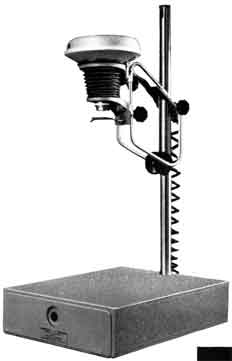Introduction

Once upon a time, you could go cradle-to-grave with Kodak products. You loaded your Kodak camera with Kodak film. You loaded the film into a Kodak tank and processed it in Kodak chemicals stored in Kodak jugs, measured by Kodak thermometers and clocked on a Kodak timer. You then put it in a Kodak enlarger and projected it onto Kodak paper, then into more Kodak chemicals in Kodak trays, and so on.
By the time I got into it, Kodak still made some darkroom equipment but mostly it was down to paper and chemicals. I didn't realize they had ever made enlargers at all until I saw them in old advertisements, like this unit pictured. This is one of the early "cold light" models, which used flourescent light (which doesn't generate heat as incandesents do), but had other problems as a trade-off. This one pictured also has an interesting baseboard; it's probably for the power supply, but it looks like it would be a nice paper-safe to me.
I'll add information as I gather it, but as usual, information on these enlargers are slim. Unlike a lot of other Kodak equipment, the enlargers aren't very well documented and simply don't have the enthusiast base to share information.
Quick Comparison
| Make | Model | Country | Era | Format | Baseboard (inches) |
Head | Focusing | Autofocus | Column | Ref | Notes |
|---|---|---|---|---|---|---|---|---|---|---|---|
| Kodak | Flourite | USA | Late 1940s | 2-¼ x 3-¼" | n/a | Cold light | Bellows | No | Single post | 2 | |
| Kodak | Hobbyist | USA | Late 1940s | 2-¼ x 3-¼" | n/a | Cold light | Bellows | No | Single post | 2 | |
| Kodak | Precision B | USA | Late 1940s | 4x5 | n/a | Diffiusion | Bellows | No | Single post | 2 | |
| Kodak | Autofocus Model E | USA | Late 1940s | 5x7 | n/a | Diffiusion | Bellows | Yes | Single post | 2 |
